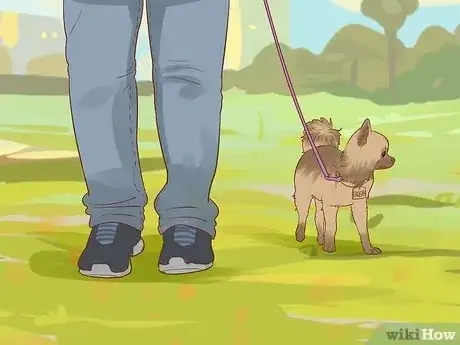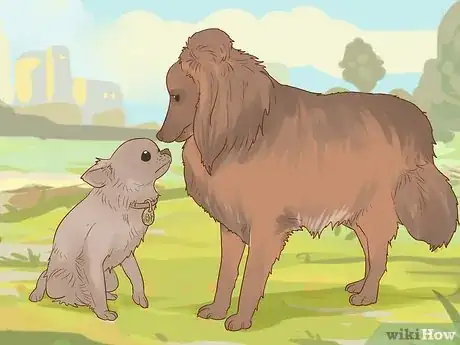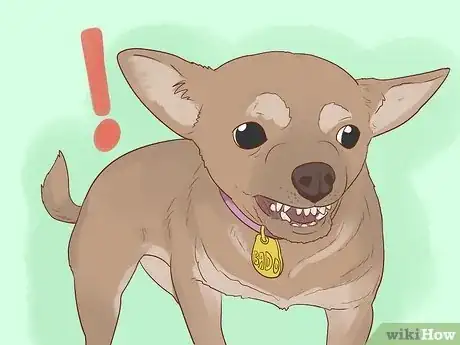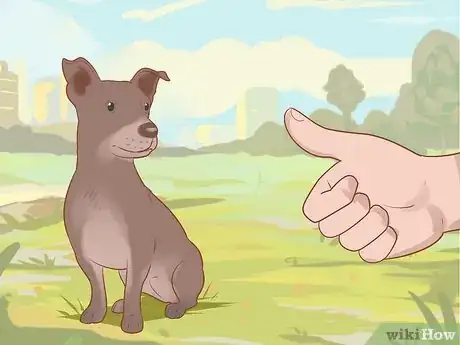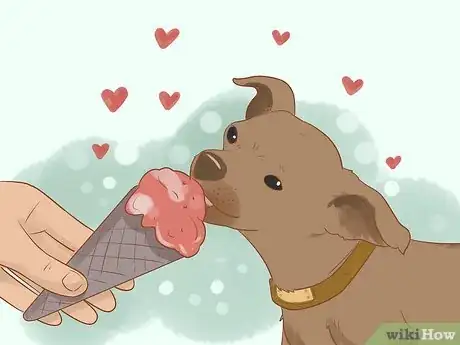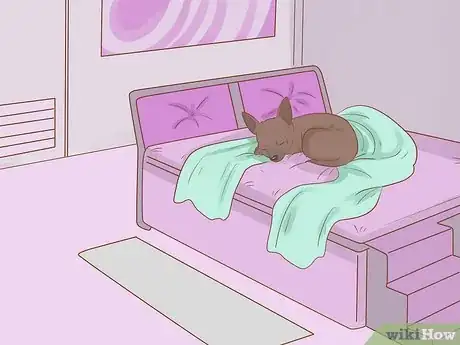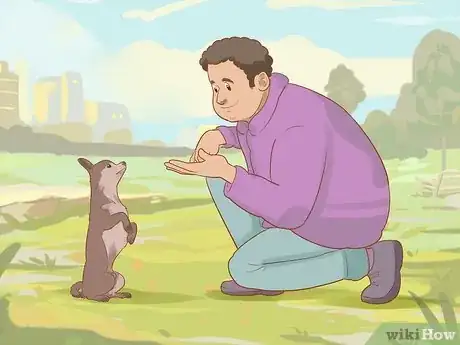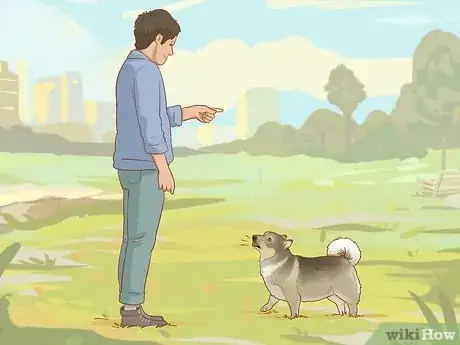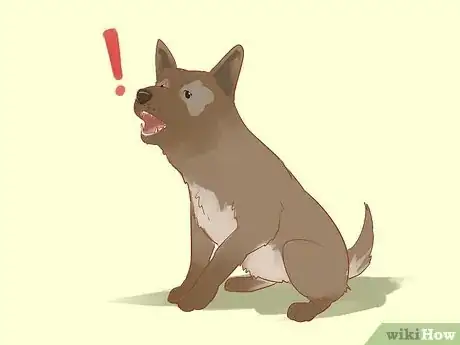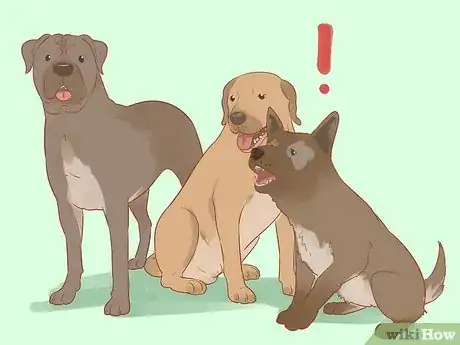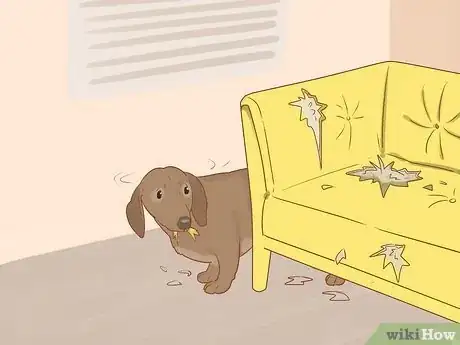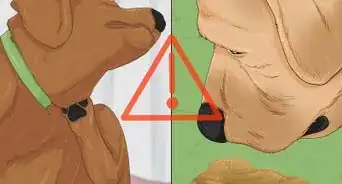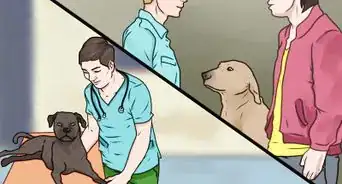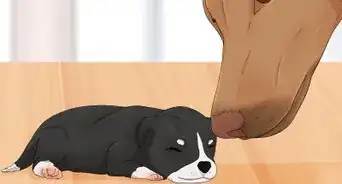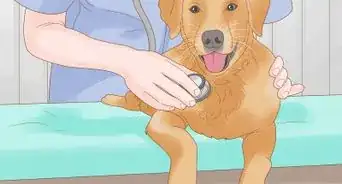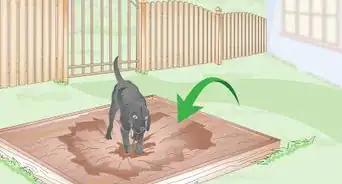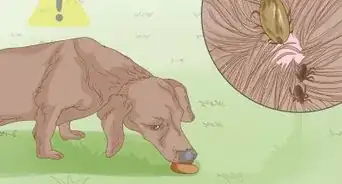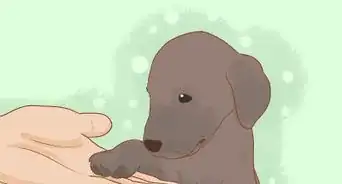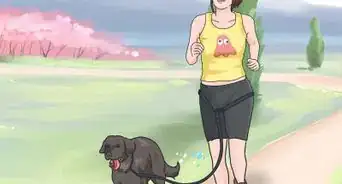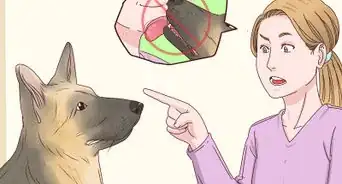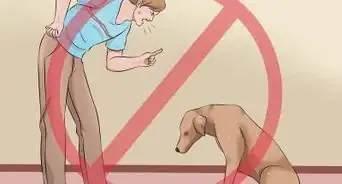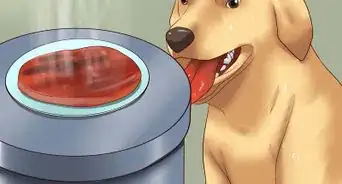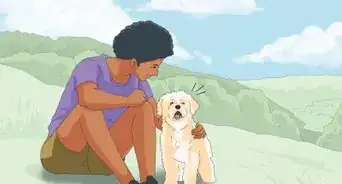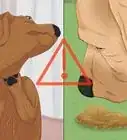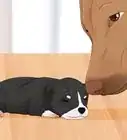This article was co-authored by Sheri Williams and by wikiHow staff writer, Jessica Gibson. Sheri Williams is a Certified Dog Trainer and Behaviorist and the Owner of sheriwilliams.com, a business that specializes in teaching veterans how to turn their dogs into service dogs or emotional support animals to assist with PTSD. Based in the Los Angeles, California metro area, Sheri has over 20 years of dog training experience and also runs a general dog training practice specializing in rehabilitating dogs through positive reinforcement training techniques. She is certified by The Animal Behavior and Training Association.
There are 12 references cited in this article, which can be found at the bottom of the page.
This article has been viewed 28,001 times.
Little dogs may be small in size, but they can certainly have big personalities. If you're concerned that your little dog is showing signs of small dog syndrome (like being aggressive towards other dogs, misbehaving, or showing signs of separation anxiety), you'll need to change how you interact with your dog. By training your dog and discouraging aggressive or dominant behaviors, you can keep your small dog safe and happy.
Steps
Managing Aggressive and Dominant Behaviors
-
1Treat your small dog like a big dog. While you may want to protect or baby your little dog, this can cause misbehavior.[1] Let your dog play with other dogs, go for walks, and explore its surroundings. Avoid letting your small dog get away with aggressive behavior that you wouldn't tolerate in a larger dog.[2]
- If you're overprotective of your little dog, you can make the dog anxious and fearful. These feelings can make it overly aggressive towards other dogs.
-
2Socialize your small dog. Expose your dog to a variety of people, dogs, and situations. The earlier you begin to socialize your dog, the better.[3] The best time to socialize dogs is from their birth and until they turn two years old.[4] Socialization will help your little dog learn to interact with its environment which can prevent aggressive behavior.[5]
- Consider taking your little dog to the dog park or puppy training classes. These can also make you feel more comfortable about your little dog interacting with bigger dogs in a controlled environment.
Advertisement -
3Recognize misbehavior. Training your dog lets you communicate with your dog so it learns what behavior is acceptable. You can also prevent aggressive or dominant behavior, if you let your dog know that it is not in control. If you see any of these misbehaviors in your dog, work on training to stop them:[6]
- Barking at other dogs
- Nipping or biting
- Jumping
- Growling
-
4Train your dog. Manage your little dog's attitude by training it. This is also an important part of preventing misbehavior.[7] Teach your dog basic commands like "come", "sit", "stay", or "drop it". Begin training your little dog by keeping it on a leash. This will give you control over the situation until your little dog can handle being around big dogs.[8]
- Be consistent when training your little dog. Your little dog should always know what to expect when it misbehaves. If your dog doesn't do something and you just ignore it, this will cause the dog to become more dominant.[9]
-
5Make your dog earn its treats. It's easy to give little dogs treats for just being cute, but this can actually cause its attitude problems. Instead, you should give your dog treats as rewards for doing things. Your dog could earn treats for exercising, responding to training, or behaving well around big dogs.[10]
- Avoid hand-feeding your little dog its treats. Hand-feeding can contribute to the pack leader mindset that you're trying to manage.
-
6Give your small dog its own sleeping space. Dogs will look for the comfiest place to rest in order to prove their dominance. This is why it's important that you never let your little dog sleep in your bed with you. Doing so will only give your dog the impression that it's the pack leader. Instead, designate a sleeping space for your dog and make it use the space.[11]
- For example, you could set up a doggie bed in the corner of a spare room. If your dog tries to come into your room to sleep at night, return the dog to their space and close your bedroom door.
Handling Specific Misbehaviors
-
1Train your dog in stages. Reward good behavior in your dog and ignore misbehavior. You'll need to be consistent and over time, your dog's behavior should improve. For example, if you want your dog to let you brush it, begin by rewarding your dog if it lets you just touch it with the brush. If it then barks at you and wants you to stop, just ignore the behavior.
- If your dog's behavior doesn't improve over time, put it in its crate for 5 minutes if it misbehaves. Ignore the behavior so it associates the misbehavior with a time out.
- Never hit or yell at your dog. Your dog won't understand why you're being aggressive and will only learn to fear you.[12]
-
2Stop your little dog from barking. One of the simplest things you can do is to take away whatever is causing your dog to bark. For example, if your dog barks at people out the window, cover the window or remove its access to the view. You can also teach your dog the quiet command and reward it for good behavior.[13] If you know your dog is going to start barking, command it to do something else that will distract it.[14]
- For example, if you see people start to walk by outside, command your dog to go to its place or lay down.
-
3Keep your little dog from whining. You'll first need to figure out why your dog whines. It may be because your dog is anxious, wants attention, or is just saying hello to you. If your dog is just saying hello, keep your greetings calm and short so it stops whining. For an attention seeking little dog, you'll need to ignore the whining. Instead, reward the dog when it's being quiet.[15]
- If your dog is anxious, you may need to work with the vet to determine the cause of your pet's anxiety. Your dog might need medication or behavior therapy.
-
4Stop your dog from nipping or biting. If your little dog nips or bites, it probably wasn't trained at a young age. Teach your dog when it's being too rough by playing with your dog. Let your dog play and nip at your hand. When your dog bites firmly, exaggerate a yelp and stop playing for 10 to 20 seconds. This will teach your little dog that it's being too rough.[16]
- If your dog's behavior doesn't improve, you may need to contact an Applied Animal Behaviorist (CAAB or ACAAB) or a board-certified veterinary behaviorist (Dip ACVB).
Recognizing Small Dog Syndrome
-
1Monitor your dog around other dogs. If your little dog thinks that it's a pack leader, it may constantly bark at other dogs or even just noises. Your little dog might lunge at other dogs that it encounters. These behaviors can be dangerous if a big dog decides to put your little dog in its place.[17]
- Keep your dog on a leash if it will encounter big dogs. For example, it's a good idea to keep it on a leash while you're still teaching basic commands. This way, you can move your dog away from other dogs if your small dog becomes aggressive.
-
2Watch for misbehavior. If your dog feels like the pack leader in your home, it may try to get your attention by jumping on your lap, invading your personal space or trying to set its own feeding times. Your little dog might become jealous when you pay attention to other people or pets and it could even jump, bark, or snap at them.
- Never give in to your little dog's misbehavior. You'll need to train your dog and never reward your dog when it tries to get your attention.
-
3Notice signs of separation anxiety. Your little dog may develop big attitude problems when it feels insecure or frightened. These feelings may come from severe separation anxiety that your dog feels when you leave the house. If you see your dog whining, barking, becoming anxious, vomiting, or becoming hyperactive, your dog may have severe separation anxiety.[18]
- Talk with the vet about how to handle your dog's separation anxiety. Crate training, downplaying your departure, and giving your dog plenty of exercise can all help.
Expert Q&A
-
QuestionHow do you stop a young, small dog from being aggressive to large dogs?
 Osama MaghawriOsama Maghawri is a Dog Trainer and Founder of OneStopK9, a dog training service in Miami, Florida. Osama utilizes balanced training methods to teach communication between owners and dogs. He specializes in basic obedience and behavioral issues such as resource guarding, fear-based aggression, and leash reactivity. Osama also helps owners understand the behaviors of their breed and how to continue training on their own in the future.
Osama MaghawriOsama Maghawri is a Dog Trainer and Founder of OneStopK9, a dog training service in Miami, Florida. Osama utilizes balanced training methods to teach communication between owners and dogs. He specializes in basic obedience and behavioral issues such as resource guarding, fear-based aggression, and leash reactivity. Osama also helps owners understand the behaviors of their breed and how to continue training on their own in the future.
Professional Dog Trainer Training your small dog while it's young is the best way to prevent aggression and bad behavior later down the road.
Training your small dog while it's young is the best way to prevent aggression and bad behavior later down the road. -
QuestionHow do you stop a small dog from being aggressive to large dogs?
 Osama MaghawriOsama Maghawri is a Dog Trainer and Founder of OneStopK9, a dog training service in Miami, Florida. Osama utilizes balanced training methods to teach communication between owners and dogs. He specializes in basic obedience and behavioral issues such as resource guarding, fear-based aggression, and leash reactivity. Osama also helps owners understand the behaviors of their breed and how to continue training on their own in the future.
Osama MaghawriOsama Maghawri is a Dog Trainer and Founder of OneStopK9, a dog training service in Miami, Florida. Osama utilizes balanced training methods to teach communication between owners and dogs. He specializes in basic obedience and behavioral issues such as resource guarding, fear-based aggression, and leash reactivity. Osama also helps owners understand the behaviors of their breed and how to continue training on their own in the future.
Professional Dog Trainer The key is to consistantly reward your dog for calm, friendly behavior and discourage aggressive behavior. For example, correct your dog when they start to bark or growl. Then, reward them once they become calm again. I highly encourage you to keep your small dog on a leash until they're well trained so you can monitor their behavior.
The key is to consistantly reward your dog for calm, friendly behavior and discourage aggressive behavior. For example, correct your dog when they start to bark or growl. Then, reward them once they become calm again. I highly encourage you to keep your small dog on a leash until they're well trained so you can monitor their behavior.
References
- ↑ Osama Maghawri. Professional Dog Trainer. Expert Interview. 9 September 2020.
- ↑ http://moderndogmagazine.com/articles/small-dog-syndrome/26546#sthash.GqT6v3Xz.dpuf
- ↑ Osama Maghawri. Professional Dog Trainer. Expert Interview. 9 September 2020.
- ↑ Sheri Williams. Certified Dog Trainer. Expert Interview. 28 April 2021.
- ↑ http://www.vetstreet.com/dr-marty-becker/why-do-little-dogs-pick-fights-with-bigger-ones
- ↑ http://www.dogbreedinfo.com/articles/smalltoydogs.htm
- ↑ Osama Maghawri. Professional Dog Trainer. Expert Interview. 9 September 2020.
- ↑ http://moderndogmagazine.com/articles/small-dog-syndrome/26546
- ↑ Sheri Williams. Certified Dog Trainer. Expert Interview. 28 April 2021.
- ↑ http://www.perfectdogtraining.com/articles/dog-training/small-dog
- ↑ http://www.dogbreedinfo.com/articles/smalltoydogs.htm
- ↑ Sheri Williams. Certified Dog Trainer. Expert Interview. 28 April 2021.
- ↑ Osama Maghawri. Professional Dog Trainer. Expert Interview. 9 September 2020.
- ↑ http://www.humanesociety.org/animals/dogs/tips/how_to_stop_barking.html?referrer
- ↑ http://www.aspca.org/pet-care/dog-care/common-dog-behavior-issues/whining
- ↑ http://www.aspca.org/pet-care/dog-care/common-dog-behavior-issues/mouthing-nipping-and-play-biting-adult-dogs
- ↑ http://www.natural-wonder-pets.com/small-dog-syndrome.html
- ↑ http://www.2ndchance.info/sepanxiety.htm
About This Article
You can handle your little dog with a big attitude by socializing it with other dogs and people, which will help prevent aggressive behavior. If your dog barks at other dogs or nips you, make sure to discourage these behaviors by firmly saying, “No!” so it knows what it did was wrong. It’s also important to use positive reinforcement to train your dog so it learns that it gets a reward when it behaves. To do this, start by teaching it simple commands like “sit” and “stay” and rewarding its obedience with a treat for encouragement. To learn how to recognize signs of small dog syndrome, read more from our Veterinary co-author.
